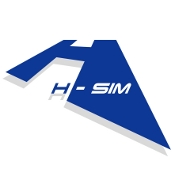 |
|
Examples of Simulated Failures:
– Engine failure.
– Engine fire.
– Turbine hot start.
– Turbine wet start.
– Progressive loss of power.
– Carburettor freezing.
– Tail rotor breakdown.
– Tail rotor chips.
– Tail rotor loss of control.
– Main gearbox chips.
– Main gearbox oil leak.
– Main gearbox overheat.
– Tail rotor gearbox oil leak.
– Fuel leak.
– Hydraulic failure.
– Engine oil leak.
– Electrical failure.
– Instrument failure.
– Generator Failure.
– and many more...
|
Flight dynamics simulated effects:
– All flight conditions: Hover, climb, descent, autorotation, etc.
– Vortex.
– Retreating blade stall.
– Mast bumping.
– Ground turbulences.
– Ground interaction.
– Dynamic rollover.
– Induced Speed.
– Flight controls primary effects.
– Flight controls induced effects.
– Realistic engine procedures, from startup to shutdown.
– Ground effect.
– Mass and inertia.
– Fuselage drag.
– Balance and Loading.
– Atmosphere (temperature, pressure, wind, ground height ,etc).
– Blade number and blade characteristics.
– Clockwise or anticlockwise rotor.
– Blade cross section characteristics.
– Clutch characteristics.
– Engine power ,torque, consumption.
– Power transmission characteristics.
|
 |







